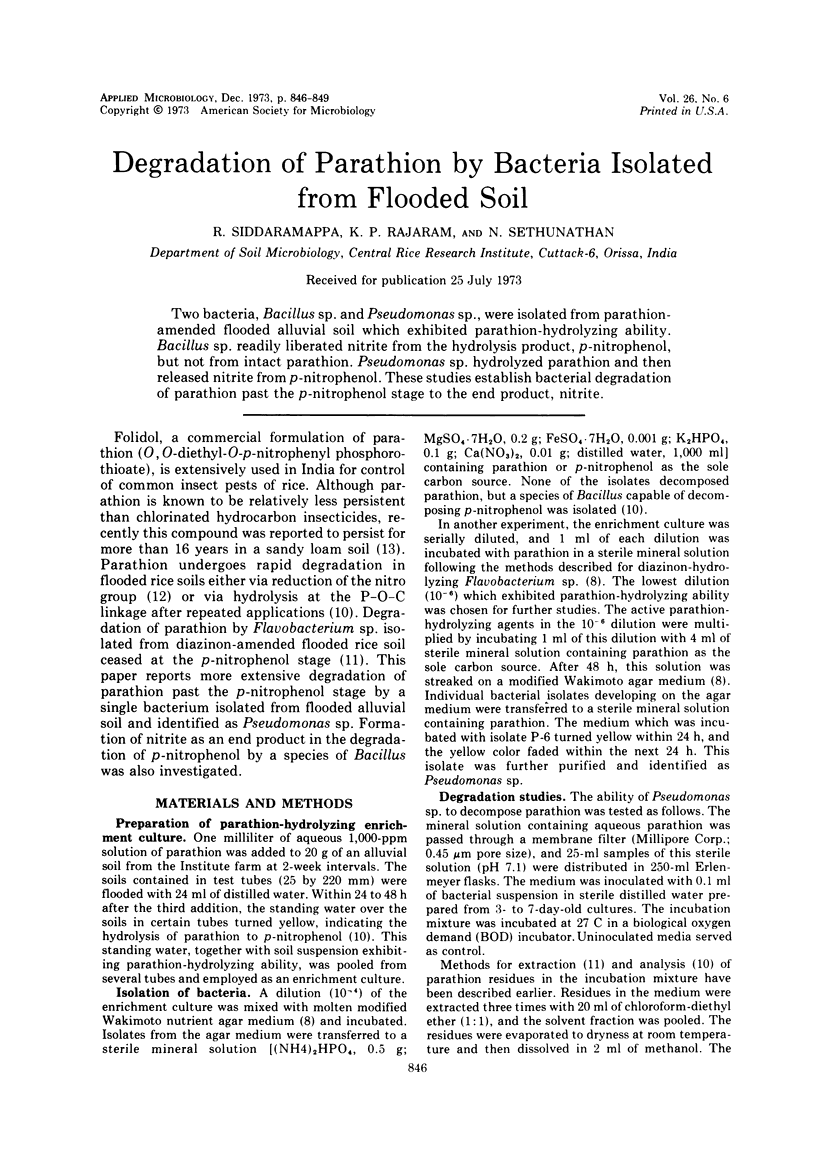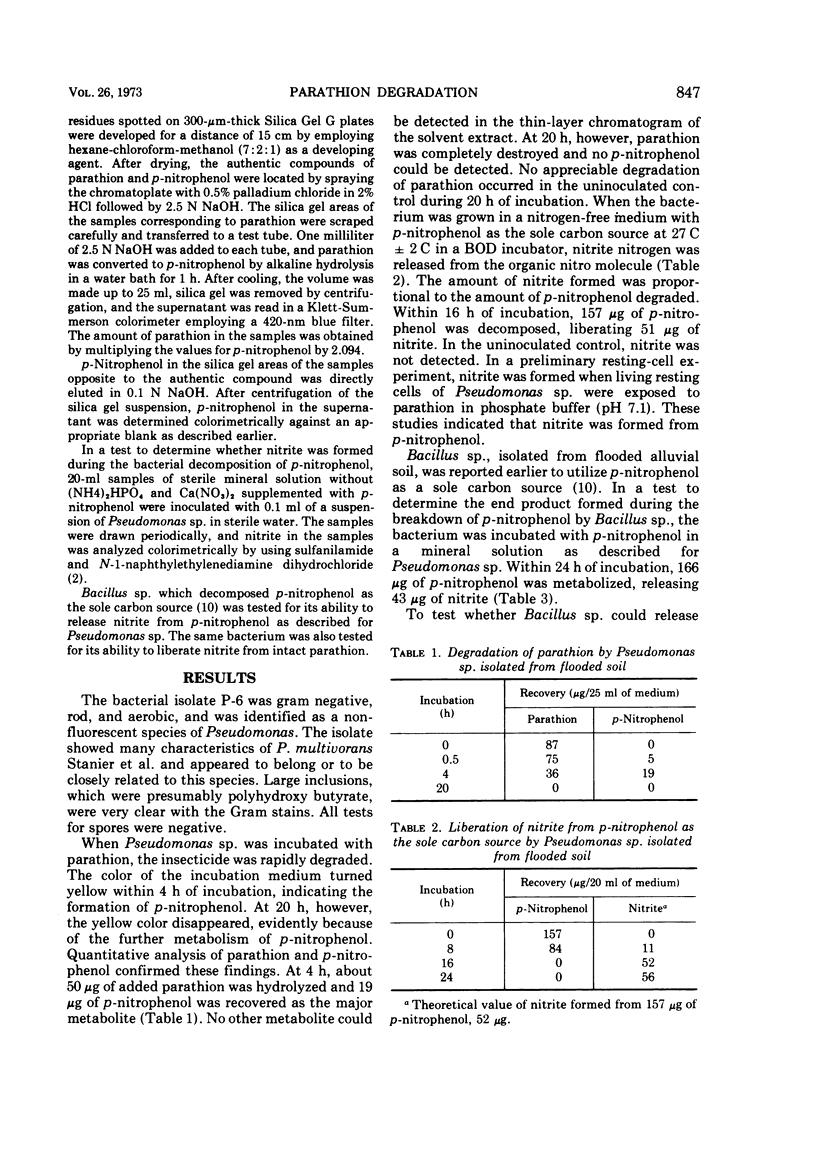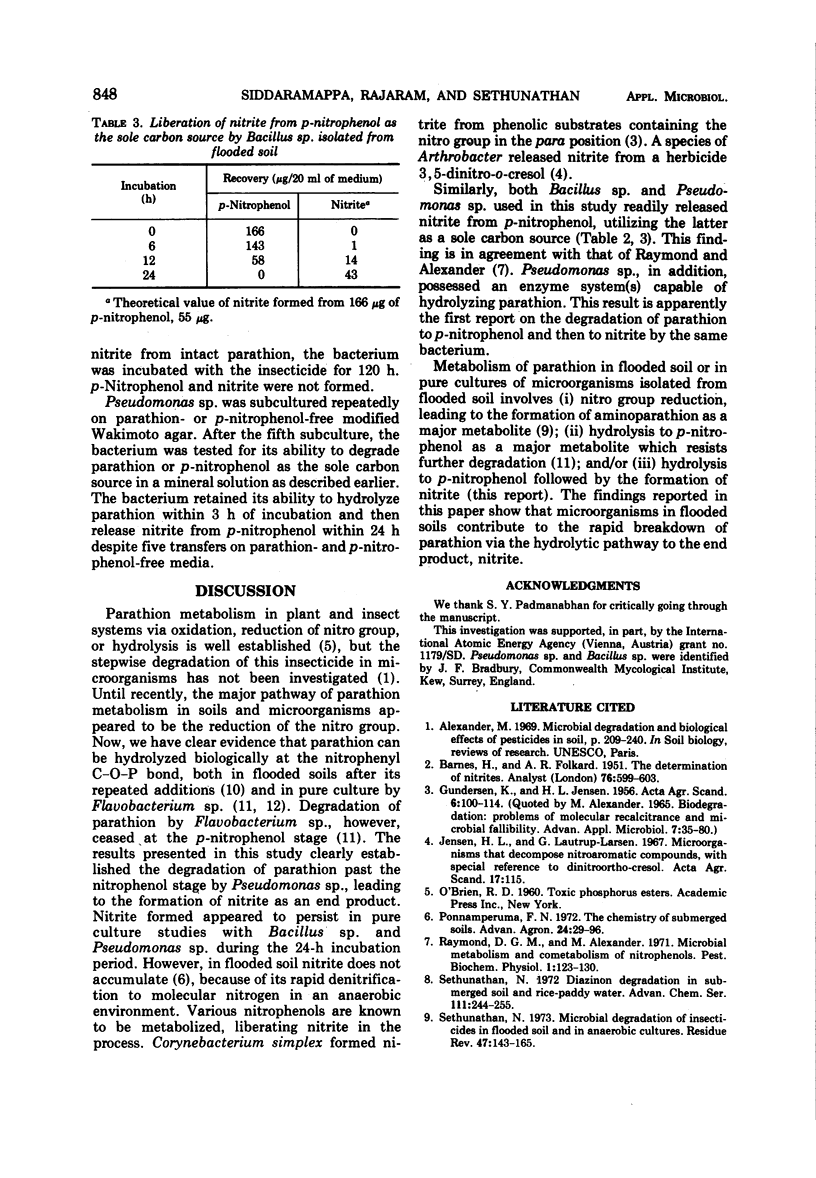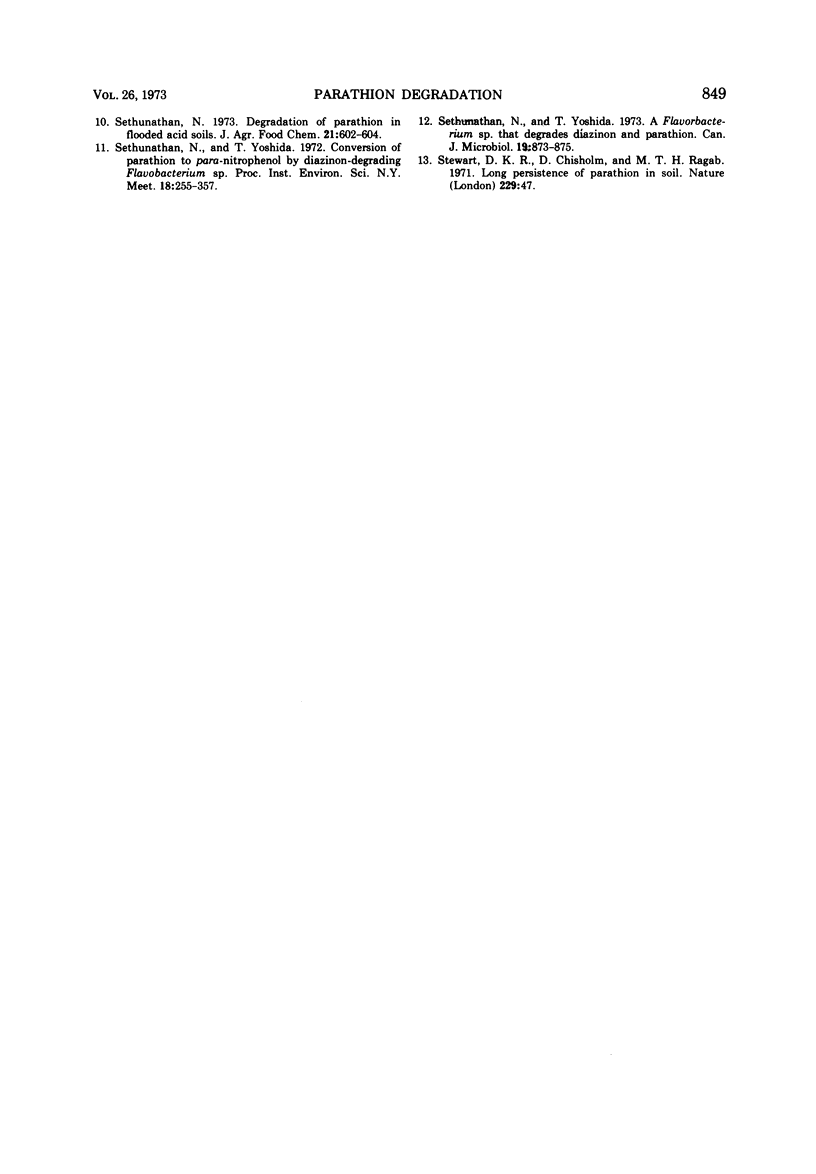Abstract
Two bacteria, Bacillus sp. and Pseudomonas sp., were isolated from parathionamended flooded alluvial soil which exhibited parathion-hydrolyzing ability. Bacillus sp. readily liberated nitrite from the hydrolysis product, p-nitrophenol, but not from intact parathion. Pseudomonas sp. hydrolyzed parathion and then released nitrite from p-nitrophenol. These studies establish bacterial degradation of parathion past the p-nitrophenol stage to the end product, nitrite.
Full text
PDF



Selected References
These references are in PubMed. This may not be the complete list of references from this article.
- Alexander M. Biodegradation: problems of molecular recalcitrance and microbial fallibility. Adv Appl Microbiol. 1965;7:35–80. doi: 10.1016/s0065-2164(08)70383-6. [DOI] [PubMed] [Google Scholar]
- Sethunathan N. Microbial degradation of insecticides in flooded soil and in anaerobic cultures. Residue Rev. 1973;47:143–165. doi: 10.1007/978-1-4615-8488-9_3. [DOI] [PubMed] [Google Scholar]
- Sethunathan N., Yoshida T. A Flavobacterium sp. that degrades diazinon and parathion. Can J Microbiol. 1973 Jul;19(7):873–875. doi: 10.1139/m73-138. [DOI] [PubMed] [Google Scholar]


